Context
One of the notable drivers behind the jump in downloads in 2020 was of course the global pandemic. As we all tried our best to adapt, apps facilitated a way to maintain some degree of normality, and at the same time helped us shift to a new way of life. As a result, we spent on average 20% more time on mobile devices.
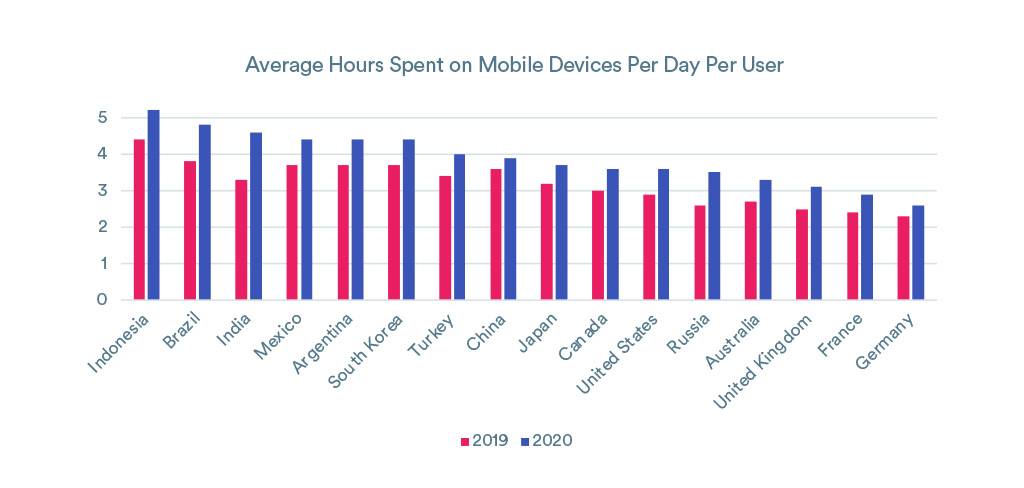
Source: App Annie
The rise in app installs has been followed by an uptick in App Store Optimisation (ASO) as a key tactic to execute under an integrated digital growth strategy. A well thought out ASO strategy will help you capitalise on search by placing you higher in results, driving an increased number of impressions, installs and in-app conversions, and helping you build an altogether stronger brand presence. But how do you do it, and do it well?
Understanding app store search behaviour
Before you start to define your growth opportunities, make sure you understand how your potential customers find apps in stores, as behaviour amongst these and traditional organic search results differs.
Searches for your brand play the leading role in driving organic impressions and clicks, but you’ll also need to target non-brand search terms to acquire new customers as this is where the real growth is. Although, unfortunately, these will also be more competitive.
In addition to keyword searches, users can also browse the store directly. Both the iOS and Google Play Store offer the option to view popular apps based on trending data or those recommended by store editors, including new updates or anticipated releases.
With this understanding in place and awareness of how the stores operate, you’ll be ready to take your first steps with ASO.
1. Start with keyword research
1.1. Building your keyword list
As with traditional SEO, the first step is to determine relevant keywords to your app based on your service or product offering. You can use terms from your main SEO strategy, but be ready to see volumes quickly drop off.
Specialist third-party platforms (such as AppTweak or App Radar) can also help you determine opportunities from a competitor perspective, offering insights into current ranking performance from both organic and paid. Such tools allow you to pull data on auto-suggestions and trending terms quickly too.
1.2. Uncover your key opportunities
Once you’ve built your keyword data set, you’ll need a bit more data to understand what terms to prioritise and build into your strategy. I recommend using Google Play Developer Console Acquisition Reports to extract organic keyword performance metrics (for free) such as:
- Store listing visitors
- Installers
- Buyers
- Repeat buyers
Whilst there’s no equivalent for the iOS App Store, if you’re currently running Search Ads, you can still pull data on:
- Popularity
- Impressions
- Taps and Tap Through Rate
- Conversions and Conversion Rate
You should also consider relevancy, search demand and conversion rate, just as you would with traditional SEO strategies.
1.3. Target your priority keywords
The next step is optimising your app for these targeted terms. In the iOS App Store the main fields you’ll need to work on are:
1. App Name
Include brand and then your priority target keyword, aligning this with your main value proposition. You have 30 characters to play with.
2. Subtitle
Not much room to manouvre with the 30 characters limit but aim to expand on your App Name and target your secondary priority keyword(s).
3. Keywords
Whilst this field isn’t viewable on your listing page, it will help you build relevancy. Head to this guide to learn more about that and the other elements.
4. Description
As shown below, this is viewable with a click to read more. Though hidden behind a tap to expand in both stores, and not immediately visible, it will help you establish relevancy. The description should include your target terms, in a natural way, but also showcase your key features and benefits (all within 4,000 characters).
Should copywriting resources be limiting, you could lean on AI (though be careful here with when and how you do that, and keep a look out for our upcoming article on Natural Language Generation to learn more about that).
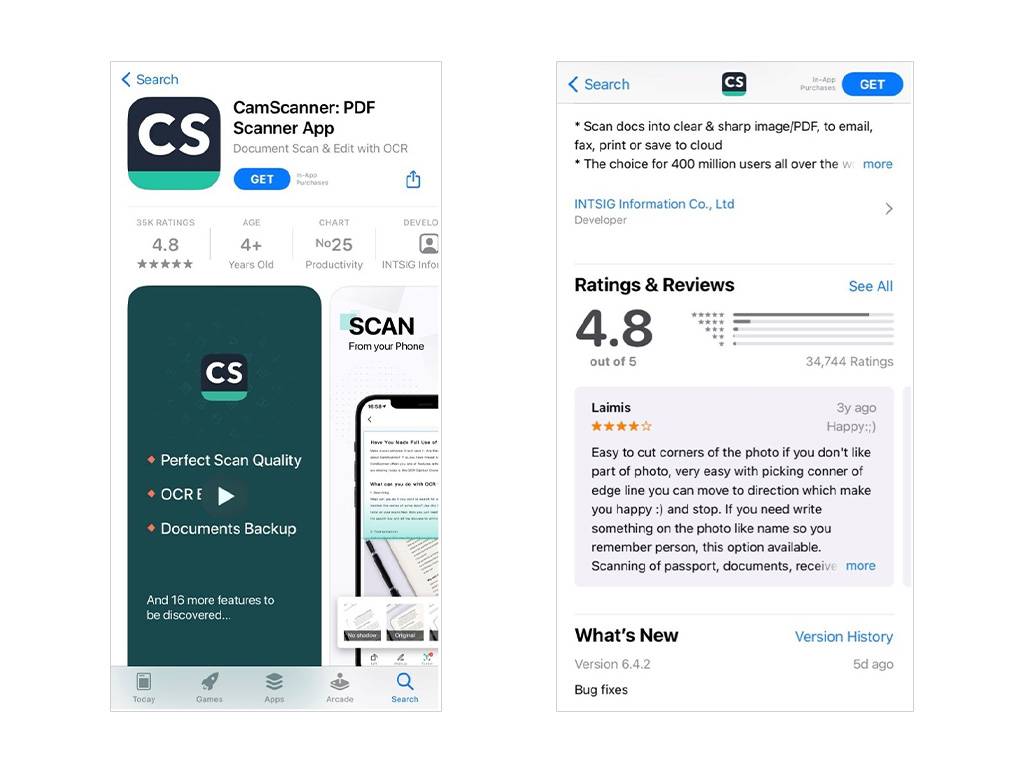
Shifting to the Google Play Store, you’ll need to focus on:
1. Title
Google call it a title, Apple the App Name, but they both do the same thing. You have 30 characters (now that Google has reduced it) to play with here, so more room to better sell your value proposition.
2. Description
This is viewable by tapping on ‘About this app’ and, like Apple, has a limit of 4,000 characters. The same guidance applies in honing in on your key features but unlike Apple you can apply basic html to make certain snippets of text stand out, including bolding and underscoring keywords, not forgetting emojis too 😎.
3. Promo Text
This is the sentence that appears below ‘About this app’ on your listing page and should highlight the best of your app. You have 80 characters to play with so use them wisely. This is your hottest chance to sell your app to potential customers!
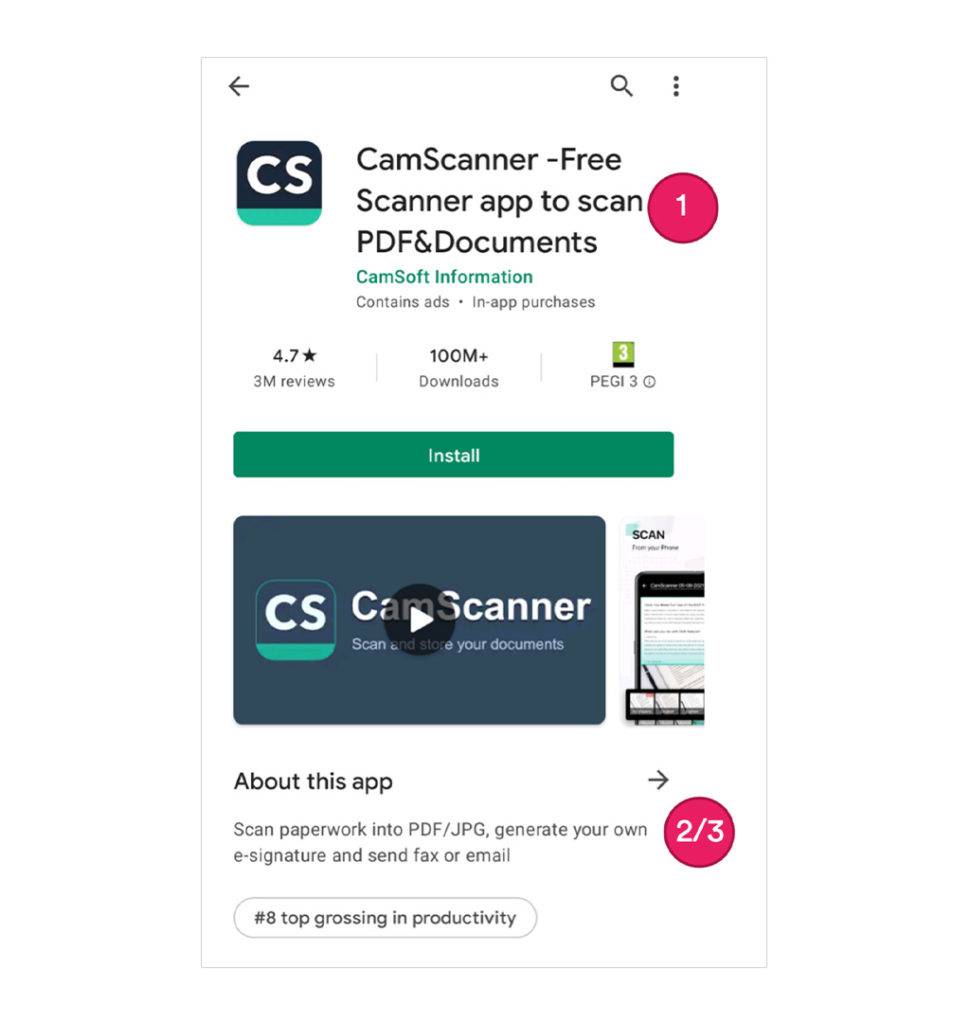
Both Apple and Google provide guidance on what to do, and what not to do, when optimising these fields. In the early days of SEO, keyword stuffing used to be rife but is now something both stores actively demote, including generic messages or claims such as “the best app” (so don’t even think about it…)
2. Make your first impression in search a good one
While improving your app’s visibility leads to an increased number of impressions, you need to ensure your first exposure in search has the power to capitalise and win the tap through and install. Fail to impress and you can expect those competing to take advantage.
In addition to your App Name, in both stores, your Icon appears in the results. In the iOS App Store, you’ll also see the Screenshot gallery shown to users in search results, and it’s these visual elements that hold significant influence over the searcher’s decision.
Start by reviewing your current creative, asking questions such as:
- Does our logo reflect our service, and is it consistent with our out of store presence?
- Are we reflecting messaging from out of store campaigns?
- Do screenshots reflect the current value offering of our App?
- Are screenshots promoting our key features?
- Are any new features promoted and showcased?
- Is messaging aligned with search intent and the keywords uncovered in our research?
- Can text be read from the search result page?
- How do we compare against the competition?
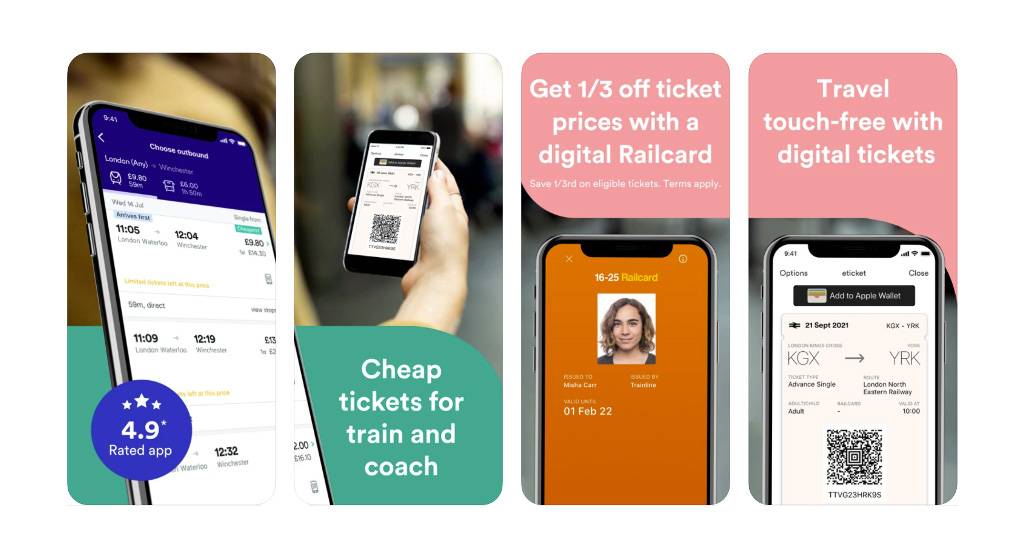
Take the Trainline as an example (above), and compare them to the Southern Rail (below). Which stands out the most to you?
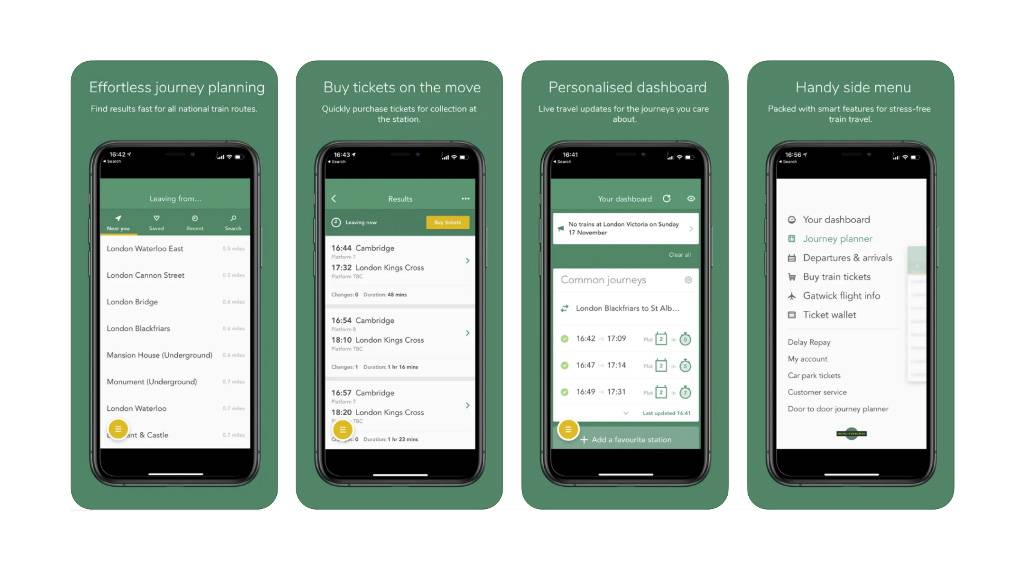
3. Seek incremental gains with CRO
Holding greater importance than conventional SEO in the app store is Conversion Rate Optimisation. With the above in mind, blindly rolling out a fresh set of screenshots could bring unwanted results.
To avoid this, A/B testing concepts against your current set, or the control group, will allow you to determine which variation performs better for conversions. You should start small with this and, based on research, iteratively test and tweak based on a list of predetermined hypotheses. By doing so, you’ll be able to measure the impact of changing a single element. Potential theories could include increasing the size of captions, to bolding mentions of features or the orientation of your gallery.
Up until very recently, A/B testing was only available in the Google Play Store but a few months ago, Apple announced several changes to the App Store as part of WWDC21. One such update was Product Page Optimisation, allowing app owners to create three additional store pages to test updates and measure conversion performance across, which you can learn more about here.
4. Cater for local audiences
With conversions still front of mind, another way to build trust is through localisation, allowing you to cater for sub-audience groups that help to make up your overall target audience.
Review your current localisation strategy if you serve an international audience or operate in a country where more than one language is commonly used. Is it a case that whilst you cater for local audiences on your website, this isn’t reflected at the storefront level? If the answer is yes, then another opportunity presents itself.
In a similar vein, if you’re targeting international expansion into new markets, your app should form another item to consider when localising and preparing your current assets. Both platforms allow you to create custom experiences localising:
- Metadata
- Screenshots; and:
- Description copy
As per localisation for SEO, you can start by reviewing app performance to determine what markets your app is being installed and used in, outside of your primary, and where engagement metrics might not be as strong due to potential language barriers or regulation issues.
5. Is there more you could be doing?
App store algorithms want to promote apps that users are enjoying and, therefore, take into account Rating and Review data. Furthermore, So do users; a study by Apptentive revealed that 77% of those surveyed read at least one review before downloading a free app, with 80% for paid apps.
Strive to receive positive feedback by monitoring your App’s performance, keeping it free from any negative reviews. In addition, make sure in-app prompts trigger at the right moment after a positive action is completed, for example, as users will be more willing to submit their thoughts. As an app owner, you can reply to reviews left by your users. There’s value in doing so, too, whether acknowledging a customer who’s had an enjoyable purchase experience or thanking another for their feedback on what they feel could be an improvement or a new feature. What might seem a small task to complete could provide greater value for user retention and repeat conversions.
Time to give it a go
To draw the parallel with SEO one last time; whilst quick wins present themselves when it comes to App Store Optimisation, there’s a requirement to invest in the right resources, including time, to increase installs and ultimately revenue.
But remember, it’s not just organic performance you’ll be improving. Paid and referral channels will also benefit. And unlocking gains for organic, paid and wider referral traffic to your app store listing will also unlock efficiencies in performance, thanks to a strong value offering that puts you ahead of competitors.
